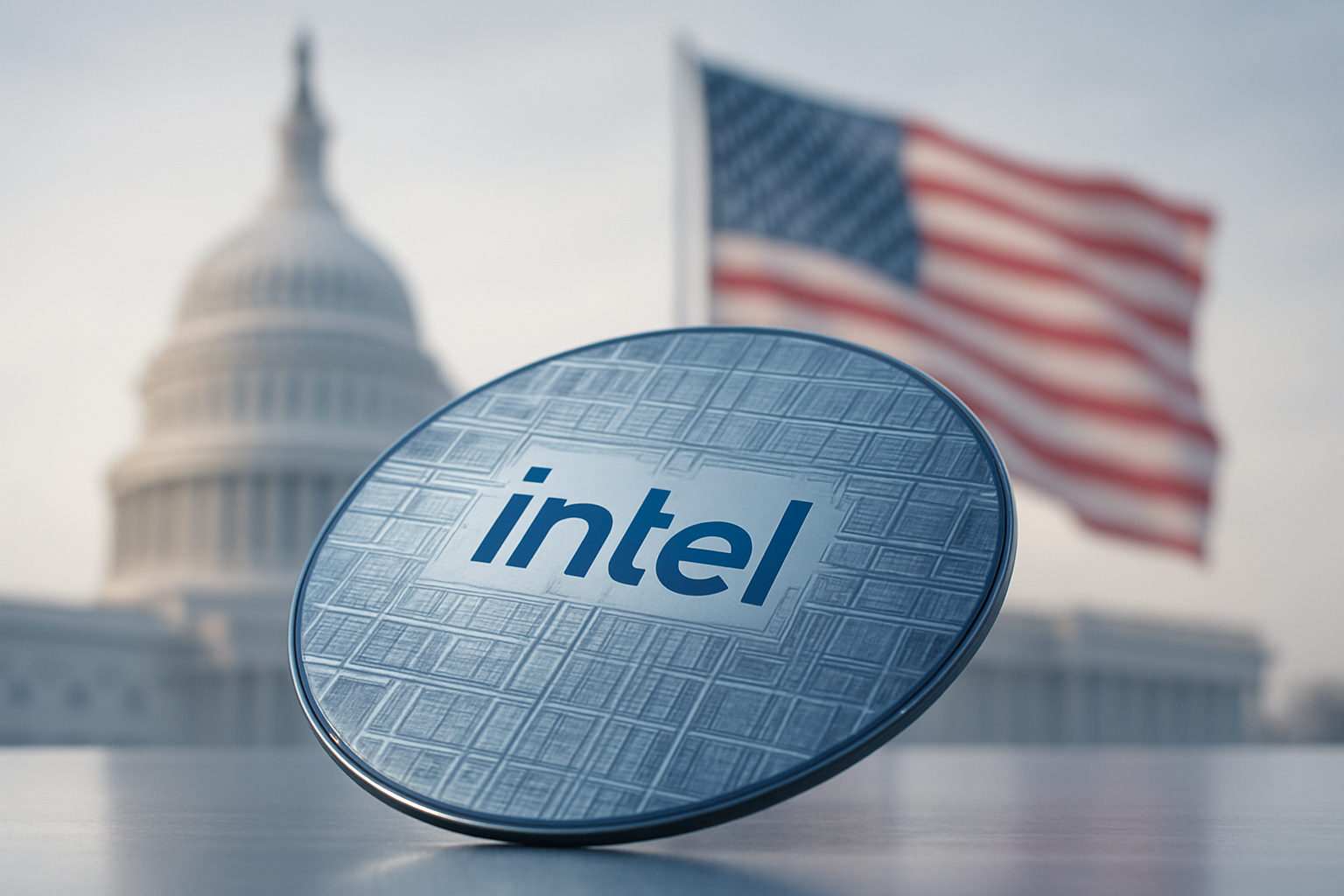The feds are buying into Intel—literally. And it's a bigger deal than you might think.
In what feels like a throwback to the financial crisis era, the U.S. government has taken a 9.9% ownership stake in Intel, effectively becoming the semiconductor giant's largest shareholder. The move transforms Intel from merely a struggling chip maker into something far more politically significant: a company deemed too strategically important to fail.
I've been covering tech policy for years, and this is... different. We're watching industrial policy being reborn before our eyes.
The details are striking. The government converted about $5.7 billion from CHIPS Act funding and another $3.2 billion from something called the "Secure Enclave program" (sounds appropriately cloak-and-dagger, doesn't it?) into equity at $20.47 per share—notably below current market prices. They've even secured a five-year warrant for another 5% at $20 per share, just in case Intel's foundry business slips below 50% ownership.
Look, this isn't subtle. It's Uncle Sam planting a flag firmly in American soil and saying, "Semiconductors stay here."
Betting on the Foundry Business
What's particularly fascinating is where this money's going. The government isn't just propping up Intel's chip design business—the part that creates those processors powering most Windows PCs. No, they're focusing on Intel's foundry ambitions, its ability to actually manufacture chips.
And that's the hard part.
Building a competitive chip fabrication facility isn't just expensive—it's astronomically, eye-wateringly costly. We're talking about $15 billion per process node, with development cycles stretching 3-5 years. Intel has fallen behind Taiwan's TSMC by at least two process generations, which in semiconductor terms is practically an eternity.
(For those who don't speak chip jargon, a "process node" refers to manufacturing technology generations—and falling behind means your competitors can make smaller, faster, more efficient chips than you can.)
The challenge is monumental. There's this principle called Rock's Law that states the cost of semiconductor fabrication facilities doubles roughly every four years. Meaning? This game gets more expensive to play with each passing cycle.
The New Guy at the Helm
Into this maelstrom steps Lip Bu Tan, Intel's recently appointed CEO. His background is... interesting. Not extensive in manufacturing, but stellar in chip design. As Cadence CEO from 2009 to 2021, he delivered a 16x return for shareholders. The man clearly knows silicon—just from a different angle.
Can design expertise translate to manufacturing prowess? That's the multi-billion-dollar question hanging over Intel right now.
I spoke with several industry analysts who expressed measured optimism about Tan's leadership, though none would go on record predicting an Intel renaissance. "He understands the ecosystem," one told me, "but rebuilding Intel's manufacturing edge will take more than good leadership—it'll take time and consistent execution."
America's Industrial Policy Renaissance
Perhaps the most significant aspect of this deal isn't about Intel at all—it's what it says about America's shifting approach to economic strategy.
For decades, we pretended that the free market alone could maintain America's technological edge. Meanwhile, Taiwan, South Korea, and Japan built semiconductor powerhouses through deliberate government coordination and support.
The irony is thick enough to slice: Maurice Chang, who founded TSMC, spent 30 years at American companies before Taiwan's government recruited him to establish their semiconductor industry. We essentially exported both our technology and our industrial policy playbook.
Now we're scrambling to bring both back home.
Having covered the semiconductor industry since the Obama administration's first tentative steps toward more active industrial policy, I can tell you this represents a dramatic acceleration. The pandemic and subsequent chip shortages finally made visible what industry insiders had warned about for years—America had outsourced a technology too critical to national security.
So... Buy, Sell or Hold?
What does all this mean if you're an investor eyeing Intel stock?
At around $25 per share and a market cap hovering near $108 billion, Intel isn't obviously cheap given its challenges. The company's carrying roughly $45 billion in long-term debt, posted negative free cash flow last quarter, and has suspended its dividend for three consecutive quarters. Not exactly a rosy picture.
But—and this is a significant but—the government has now effectively declared Intel too strategically important to fail. That changes the risk calculation considerably.
I wouldn't rush to buy just yet, though. Government support reduces existential risk but doesn't guarantee attractive returns. The feds can afford patience with their $20 per share entry point; retail investors need to consider whether they have the stomach for what will almost certainly be a multi-year turnaround with plenty of bumps along the way.
Sometimes the most intriguing investments sit at the intersection of business strategy and national security. Intel certainly qualifies. Whether it succeeds or stumbles will tell us volumes about America's capacity to rebuild its manufacturing muscle in the 21st century.
And that story—far more than quarterly earnings reports—is what makes this particular corporate drama worth watching closely.
